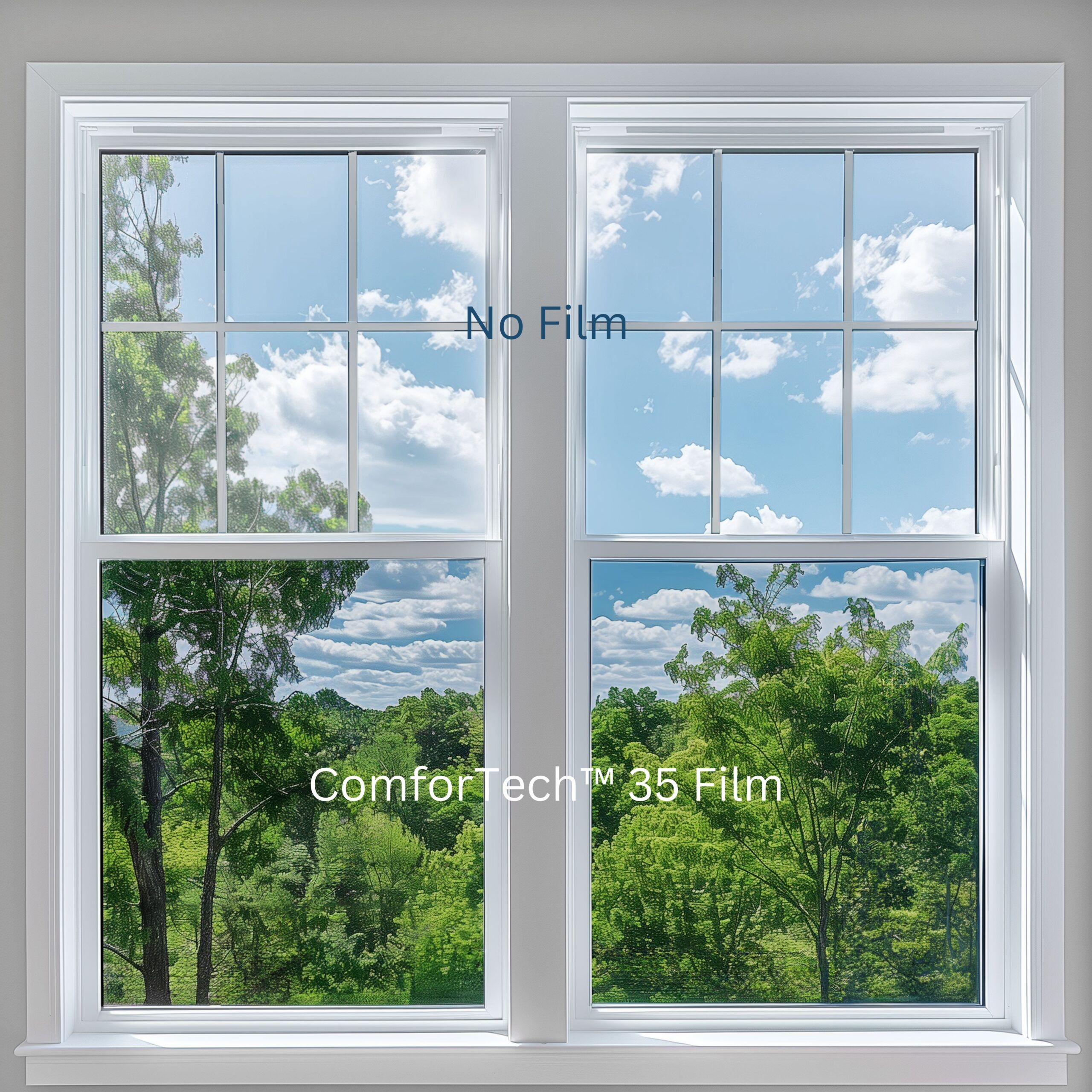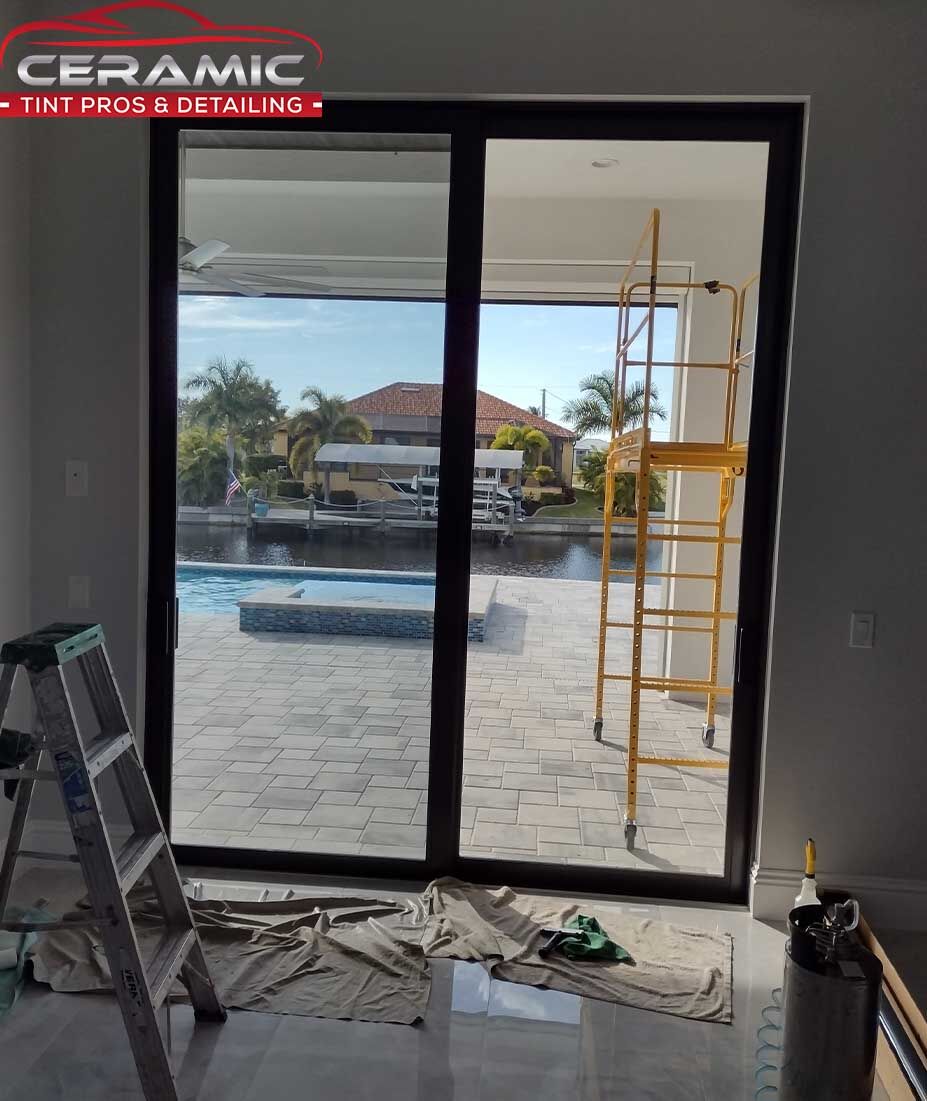Residential Window Tint: An Overview to Selecting the Right Color
Residential Window Tint: An Overview to Selecting the Right Color
Blog Article
Just How Residential Home Window Tinting Improves Your Home's Energy Effectiveness
Residential home window tinting provides a compelling option for homeowners looking for to boost power efficiency within their living rooms. By applying specialized movies to windows, it efficiently decreases warm transfer, thereby maintaining indoor temperatures and reducing the need for too much heating or air conditioning. This not only reduces power usage however also offers a more comfy atmosphere by reducing glow. Comprehending the nuances of exactly how tinting jobs and picking the proper type for your home can be essential. Oddly, what variables should one think about before making this financial investment?
Recognizing Home Window Tinting
Recognizing home window tinting is necessary for house owners looking for to enhance both comfort and energy effectiveness in their living areas. Residential Window Tint. Home window tinting includes the application of a thin film to the interior or exterior surface of glass windows. This film can substantially regulate the quantity of sunlight and warmth that goes into a home, hence influencing indoor environment problems
There are different types of window tinting films readily available, each with distinctive properties. For example, dyed films soak up solar energy, while reflective films deflect it far from the glass surface. Ceramic movies provide an equilibrium of exposure and heat denial, making them a popular option among home owners. The efficiency of home window tinting is frequently measured by its Visible Light Transmission (VLT) percent, which indicates just how much light can go through the movie.
Benefits of Power Performance
Window tinting not only improves looks however also plays a considerable role in enhancing energy performance within household spaces. By reducing warmth transfer through home windows, tinted films develop a much more steady interior climate, which can cause considerable reductions in power usage for cooling and heating. This energy efficiency converts into reduced utility bills, offering homeowners with considerable lasting savings.

Additionally, window tinting enhances the comfort of living rooms. By decreasing glare and obstructing unsafe UV rays, tinted windows produce a more positive atmosphere, which can lead to boosted well-being for owners. The protection versus UV rays also assists maintain furnishings and flooring from fading, contributing to the durability of house items.
Exactly How Tinting Works
Tinting films run via a combination of advanced products and technologies made to control the amount of solar power going into a home. Largely made up of polyester, these movies typically integrate ceramic or metal particles that mirror and soak up warm. This double capability allows them to substantially reduce the infiltration of ultraviolet (UV) rays and infrared radiation while allowing visible light to travel through.
The performance of home window tinting is measured by its solar heat gain coefficient (SHGC), which shows how much solar power is transmitted through the home window. Reduced SHGC worths are more suitable as they represent better warm rejection. Furthermore, window tints can include a range of shades, enabling property owners to customize their visual preferences while enhancing energy effectiveness.
Additionally, these movies act as an obstacle, protecting against warmth loss throughout cooler months by mirroring indoor warmth back into the home. This thermal insulation impact enhances the cooling benefits acquired throughout warmer months, contributing to a well balanced indoor climate year-round. By managing solar energy efficiently, domestic window tinting not just improves comfort yet additionally plays an important role in lowering energy consumption and reducing energy expenses.
Picking the Right Color

There are numerous types of window movies available, consisting of dyed, metalized, and ceramic. Colored movies are best site affordable however may you could try this out have restricted longevity. Metalized films provide better warm rejection but can conflict with electronic signals. Ceramic films offer exceptional heat control without endangering exposure and are highly long lasting, making them a prominent selection.
Visible light transmission (VLT) is an additional critical factor, as it shows the amount of natural light that can travel through the tinted glass. House owners must choose a tint with a VLT that complements their illumination choices while still offering sufficient glare reduction.
Additionally, assessing the solar warmth gain coefficient (SHGC) can aid identify how well a tint can obstruct warm from sunlight. A reduced SHGC shows better warmth control, eventually improving power effectiveness.
Installment and Upkeep Tips
Correct installment and maintenance are vital components in maximizing the advantages of property home window tinting. Specialists also utilize specialized methods and devices, which can improve the sturdiness and efficiency of the tint.
Following installment, upkeep is important to lengthen the life of the home window film. It is recommended to wait at least 30 days before cleaning up the tinted windows to allow the sticky to cure fully.
Dealing with these issues immediately can prevent additional damage and keep power effectiveness. By sticking to these setup and maintenance ideas, property owners can ensure their home window tinting continues to supply considerable energy savings and comfort for years to come.
Conclusion
In final thought, domestic window tinting serves as a reliable solution for improving power performance within homes. By decreasing heat transfer and blocking damaging UV rays, window movies contribute to lower power intake and boosted interior convenience.
Home window tinting includes the application of a thin movie to the interior or exterior surface area of glass home windows. By minimizing warm transfer through home windows, colored movies produce an extra stable indoor climate, which can lead to considerable decreases in power consumption for heating and air conditioning.The efficiency of window tinting is determined by its solar warmth gain coefficient (SHGC), which shows exactly how much solar power is transmitted through the you could try here window. By managing solar energy successfully, household window tinting not only enhances comfort yet additionally plays an important duty in reducing energy consumption and decreasing utility expenses.
By decreasing heat transfer and blocking damaging UV rays, home window films add to decrease energy intake and boosted indoor convenience.
Report this page